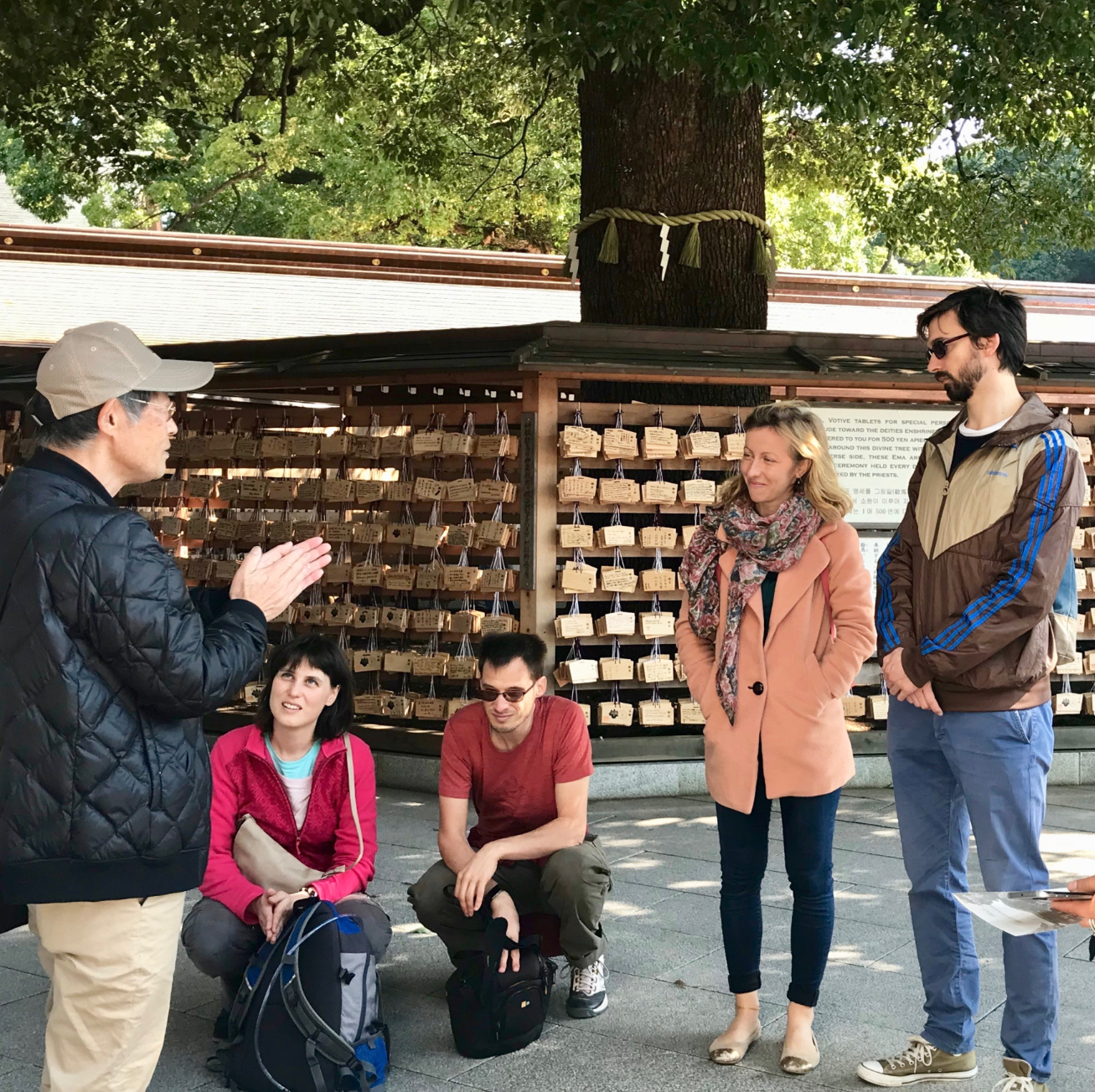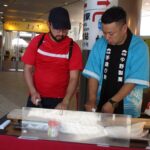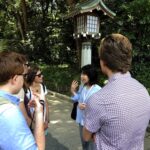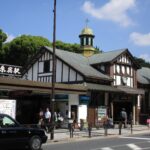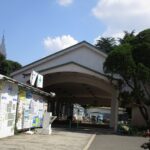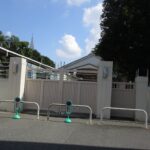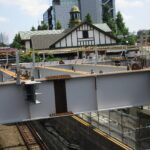I sincerely thank you for taking the time for joining the tour to Meiji Shrine and Harajuku on June 3. We had nine guests from the various countries of Canada,America,Mexico,Columbia,Chile,UK and Philippines. Four of the guests had participated in our tour to the East Gardens of the Imperial Palace on the previous day which we appreciate very much. The weather was perfect on this day prior to the rainy season. I hope all of you enjoyed walking with us.


As you might have been guided, Harajuku Station is the Tokyo’s oldest wooden station, the gateway to Meiji Shrine/Takeshita Street and the symbol of Harajuku. The landscape is lovely with a little turret on the roof, the wooden beams on the walls and the old but artistic clock. It is regrettable that this beautiful building may be demolished.
Current Harajuku Station was constructed in 1924 shortly after Meiji Shrine had been built. It was the year after the Great Kanto Earthquake. During WW2 the building was not destroyed by the airbombings and survives in its original form for nearly 100 years. This is half-timbered or the Tudor style often seen in the British countrysides.
Not many people know that there is the separate platform exclusively used for the Imperial Family. Since it is conveniently located, an unnoticeable presence and quick riding is possible, the Imperial Family used to come to this platform 10 times a year. However, due to the congested train schedule it became difficult for the Imperial train to operate. 2001 is the last time when the Emperior came to Harajuku Station. This is the only one Imperial platform in Japan. The door of this building is normally closed.
By the way Harajuku is the former name of the area. Hara means plain field and Juku means post-town. Harajuku village was on the highway from the south to the north and there were some inns during the feudal periods. Harajuku was replaced by Jingumae(in front of the shrine) and disappeared due to the change of the local regulation except the name of the station about 50 years ago. The local people are attached to the name of Harajuku.
There is an interesting fact. The average number of the passengers at Harajuku Station is about 74,000 per day. 65% of those passengers have no season tickets. They may be tourists, shoppers or pleasure seekers. Majority of the passengers are non-season-ticket holders. Apparenty Harajuku Station has the largest percentage of the passengers without commuter passes in Tokyo.
Since the building is getting old, deteriorated and the 2020 Tokyo Olympic Games are approaching, construction of the modern structure is underway. It hasn’t been determined yet whether the old building will be preserved. I really hope that JR East will retain at least some of the beautiful part of the building.
It is recommendable for you to see quaint and charming Harajuku Station before it disappears. Please join us at that time.
(posted by Yoshi)

